This is Day 13 of your Menstrual Cycle 267 days to go…
This is an optimum time to conceive, but try not to think too much about when you might be ovulating and just enjoy sex!
What’s happening inside
The sperm cell can be seen here inside the fallopian tube. Since
sperm can stay active and alive inside you for up to 72 hours, it’s
possible to get pregnant even if you don’t ovulate for two to three days
from now.
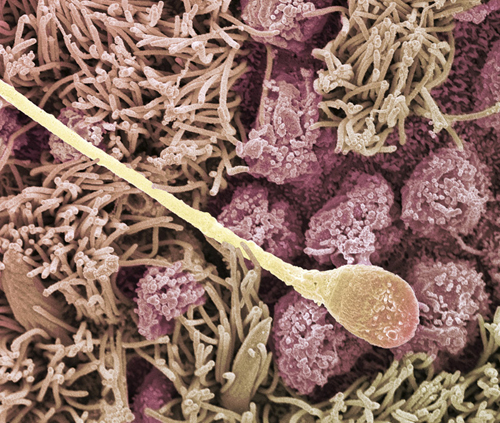
Use the time around ovulation
to put some excitement and spontaneity back into your sex life. With
all the recommendations and restrictions, not to mention old wives’
tales, that supposedly maximize conception rates, it’s easy to forget
that sex is meant to be enjoyable. If you’re hell bent on conceiving,
then the fun can get forgotten. You might want to try different
positions, times, or places for sex. If you and your partner aren’t
usually that adventurous, this is a good opportunity to try varying
things a little.
Try to have
sex every 24–48 hours. If your partner ejaculates regularly, it will
encourage the production of quality sperm. The benefits of abstaining
have been greatly overstated in the past. It is true that not having sex
for up to seven days can boost the number of sperm, but research now
shows that abstinence can impair the motility (swimming ability) of
sperm, especially if the sperm were already borderline. The longer the
period of abstinence, the more marked the effect will be. So have fun
and if you conceive that’s a bonus!
Having an orgasm could boost your chances of conception.
One theory is that the
female orgasm is an evolutionary device designed to convey semen into
the cervix as the uterus contracts. If the woman climaxes up to a minute
before her partner, or she doesn’t orgasm, she will retain less semen
than if she comes at the same time or after him.
Sexual positions
It seems that how you have sex can help conception.
Positions that maximize penetration, such as rear entry, may work best
since sperm is then deposited as close to the cervix as
possible—languishing too long in vaginal secretions can lead to a
sperm’s early death. If the man is on top, the woman could try placing a
pillow under her buttocks to raise her pelvis and aid the movement of
sperm toward the cervix. Woman-on-top positions may lead to leakage of
sperm. Avoid using lubricants because they can adversely affect sperm.
It may improve your chances of conception if you lie down for 15–20 minutes after having sex. Lying with your legs in the air will aid gravity further.

This is Day 14 of your Menstrual Cycle 266 days to go…
You’re highly likely to ovulate today, if you haven’t already, and if egg meets sperm you may soon be pregnant.
What’s happening inside
The ovary can be seen here at the end of the fallopian tube. At
around this time of the menstrual cycle, a follicle at the surface of
the ovary releases an egg, which is swept down the tube by clearly
visible fingerlike projections called fimbriae.
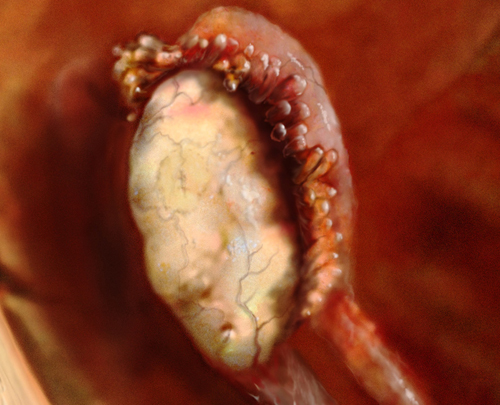
Typically ovulation occurs around day 14 but it can occur earlier or later. Ovulation is when an egg is released from your ovaries (sometimes two eggs are released—see as a matter of fact). LH rises thanks to estrogen output from the growing follicles (see This is Day 12 of your Menstrual Cycle),
and it is this rise that triggers the events that now take place in the
follicle. LH makes the egg inside the follicle become fully mature,
ready for release and fertilization. This is the point at which the egg
reduces its number of chromosomes (see How genes are passed on) from 46 to 23.
The follicle is rich
with fluid by now. Just before ovulation, it is some 1 in (2 cm) or more
in diameter. In position, it lies just below the surface of the ovary.
If you could see the follicle, it would look like a blister about to
burst. Next the follicle produces enzymes that digest its outer layer,
releasing the egg on to the surface of the ovary.
Once the egg is
released from the follicle, it’s soon swept into the nearest fallopian
tube by the fingerlike projections that form the end of the tube, where
it will hopefully be fertilized.
At ovulation, the follicle ruptures and the egg breaks through the surface of the ovary. Sometimes two follicles mature to this point, both releasing an egg.
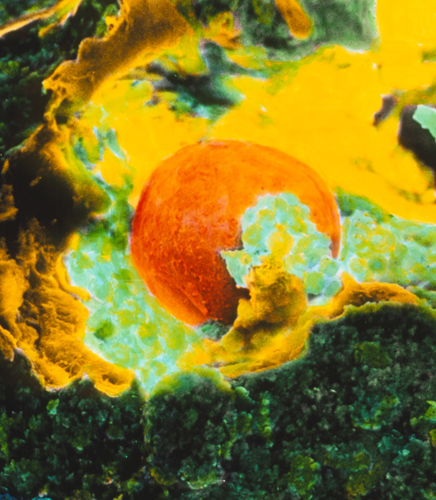
If you’ve had nonidentical twins already, your chance of having another set quadruples.
Nonidentical
twins occur when more than one follicle ripens completely and the two
eggs released at ovulation are both fertilized. The increased chance of
having another set of twins is because most women who conceive
nonidentical twins (without fertility drugs) show a pattern of releasing
more than one egg per cycle. Your chance of having a second set of
twins is about 1 in 3000.
… Relationships
Pressure to conceive
If you’re trying to conceive,
you may have little else on your mind and this can put a strain on your
relationship. With the goal of pregnancy in mind, it’s easy to become
clinical about sex. At this point, you and your partner may be regarding
each other not so much as sex objects, but as components of a
baby-making machine. Enjoyment can so easily get lost.
Understandably, you
may find that your partner becomes aggrieved if he feels pressure to
provide sperm; the distress may have an adverse effect on a man’s
willingness and even ability to have sex. If this happens, it can lead
to a downward spiral, which naturally makes conception less likely, and
may cause discord.
Make an effort to be
loving and work together rather than against each other. Consider taking
a break; couples often conceive when they’re away on vacation and more
relaxed. Make sure you also enjoy some stress-free sex outside of your
fertile window.
Conception
Pregnancy begins with
conception, a complex process that involves the release of one or more
eggs from the ovary, successful fertilization by a sperm in a fallopian
tube, and implantation in the lining of the uterus.
The release of an egg
Each woman is born
with her full quota of follicles that contain immature eggs, some of
which will mature and be released in her lifetime. Every month, follicle
stimulating hormone (FSH), released from the pituitary gland,
encourages a number of the follicles to ripen. These follicles in turn
produce the hormone estrogen, rising levels of which encourage the
uterus to thicken to prepare for the implantation of a fertilized egg.
As the eggs mature, the level of estrogen rises and the pituitary gland
receives a message to produce luteinizing hormone (LH). Every month,
this surge in LH triggers one follicle (and sometimes more than one) to
release a mature egg—the moment of ovulation.
Once the egg leaves
the ovary, it enters the fallopian tube, which lies close by, and starts
to travel through the tube to the uterus. The fallopian tube is just 4
in (10 cm) long and its lining has many tiny fronds that literally brush
the egg in the direction of the uterus. Even so, the journey takes five
days or more. In the course of this voyage, the fertilization of the
egg takes place.
The journey of the sperm
During sex, the man
releases an abundance of sperm—around 250 million at each
ejaculation—into the vagina. Each sperm has a long tail to propel it, so
it’s well equipped to swim up to the fallopian tube, where
fertilization of the egg takes place. The whole distance, from the
vagina through the uterus and up into the fallopian tube can be
accomplished in hours. However, the sperm can survive in the vagina and
the uterus for 3–5 days, meaning there is a window of around 6 days in
which fertilization can take place (an egg lives 12–24 hours after
ovulation). Not all of the millions of sperm make it as far as the
fallopian tube; in fact, most of them die, seep out of the vagina, or
get lost along the way. Around just 200 sperm, only a tiny fraction of
the number originally released, arrive at the site of the egg.
The process of conception:
Once successfully fertilized by a sperm in the fallopian tube, the egg
travels to the uterus. Its cells divide continually until it forms a
bundle of cells that are ready to implant in the uterine lining.
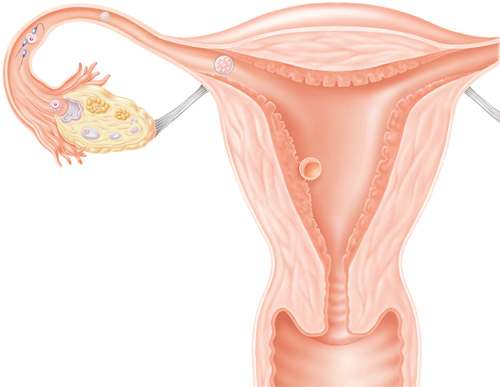
The moment of fertilization
Although many sperm
cluster around the egg and try to penetrate its outer layer, only one of
them will manage to burrow its way through the surface and fertilize
the egg. Once this happens, the egg’s outer layer thickens quickly to
keep out other competing sperm, so that each egg can be fertilized by
only one sperm.
Implantation in the uterus
By the time the fertilized
egg reaches the uterus, it has grown from a single cell into a compact
cluster of cells, called a blastocyst. This cluster attaches to the
uterine lining very loosely at first, then more deeply and permanently.
At this early stage, the blob of cells, which is more than just a
fertilized egg, but not quite an embryo, is sometimes referred to as a
“conceptus.” Although its sex is already determined, it’s not remotely
baby-shaped yet. The cells produce enzymes that allow it to digest its
way into the uterus lining, and lie snugly below the surface.
Assisting conception
Some couples find
that conception takes longer than anticipated. If you haven’t become
pregnant after two years of trying, your doctor may suggest fertility
testing to identify if your fertility or that of your partner is
suboptimal. If this is the case, you may want to embark on fertility
treatment to assist conception. The most popular treatment is in vitro
fertilization, or IVF. This involves taking fertility drugs to help you
produce more eggs. The eggs are harvested and fertilized with your
partner’s sperm in a laboratory (hence the term “test-tube baby”), and
you’re given hormone treatment to prepare the uterus to receive the
fertilized eggs. If the quality of sperm is poor, a procedure called
intracytoplasmic sperm injection, or ICSI may be used, whereby a single
sperm is injected directly into an egg and the fertilized egg is
transferred to the uterus. Intrauterine insemination, or IUI, involves
putting sperm that have been selected for viability directly into the
uterus. This is used where sperm has poor motility, or there are
problems with ovulation.
Anatomy
The mature egg has a diameter of 0.1 mm and is surrounded by a protective outer layer known as the zona pellucida.
The far smaller sperm consists of a head, which contains the male
genetic material and enzymes to help break down the egg’s outer layer,
and a tail that propels the sperm up the vagina and uterus to the
fallopian tube.
Egg
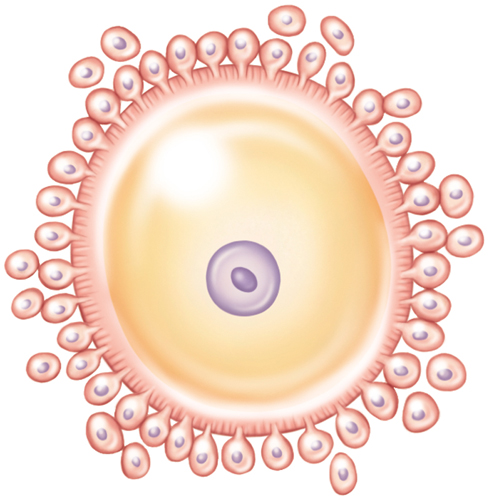
Sperm
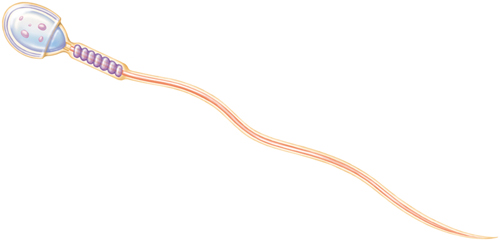
How twins are conceived
Today in the US, one in every 31 births is a twin birth. Twins are conceived in two ways that result in either identical or nonidentical twins.
Identical twins
occur when one fertilized egg splits into two separate cells. This type
of twin is half as common as nonidentical twins. Identical twins have
the same genes and are the same sex, so they are very alike, although
subtle differences in their environment can mean they’re not always
identical in every way. Identical twins are known as “monozygotic”
twins, since they come from one “zygote,” or fertilized egg. Triplets,
quads, and higher multiples can be monozygotic too. However, triplets
and more can arise from more complex combinations. For example, there
may have been two fertilized eggs, one of which split into two.
Nonidentical twins occur
when two eggs are released at ovulation. Each twin’s genes comes from
the parents, but the twins don’t share the same mix of genes.
Nonidentical twins are also called “fraternal” twins, since they’re no
more alike than other siblings and can be of a different sex. They’re
also referred to as “dizygotic” twins, because they come from two
separate “zygotes,” or fertilized eggs. Nonidentical triplets arise when
three eggs are released instead of one. This is more likely to occur
when ovulation is induced with drugs during fertility treatment.
Identical twins that result from the division of one fertilized egg may share a placenta in the uterus. Occasionally, they also share an amniotic sac.